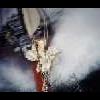-
Content Count
2,635 -
Joined
-
Last visited
-
Days Won
5
Content Type
Profiles
Media Demo
Forums
Gallery
Calendar
Store
Posts posted by rigger
-
-
-
-
-
what time?
-
-
-
-
-
From a little bit of research it appears that some areas in the US have banned 2-stroke outboards but the EPA has not - it seems that because the older 2-strokes could not comply with the new regs people red that to mean that all 2-strokes were banned when in fact they were not banned as long as they could comply with the regs.
Wheels I believe that the two strokes now being sold in the US, UK, Europe comply with the regulations regarding emmissions. A lot of the 2-strokes on the market new in NZ most likely do not comply.
I would say that more countries allow the older ones to be sold than those countries that do not.
From what I can find out the smallest 2-stroke of the new breed is about 25hp
Tohatsu 2 stroke - http://www.tohatsu.com/tech_info/tldi_faqs.html#Q1
Evinrude - http://www.marineenginedigest.com/profi ... e/etec.htm
Mariner - http://www.marineroutboards.co.uk/detai ... duct_id=42
an article on 2 stroke versus 4 stroke
-
Well considering NZ is one of the only countries where you can still buy a brand new 2 stroke o/b I think we have a while before we get our sh*t together regarding boatie effluent (pardon the pun)
You need to check you info sources - 2-stroke outboards are still sold all over the world even in the UK http://www.marineroutboards.co.uk/detai ... duct_id=42
Also in the EU / UK the sale of non-compliant 2-stroke outboards can still be sold to commercial operators but not to recreational users. Let me know if that info is out of date.
they also sell the same outboards in the US.
Evinrude also sells new 2-stroke outboards in the US.
I guess the difference is that these outboards are much cleaner than what is sold in NZ
-
-
I heard Westpark were not allowing any more liveaboards as their electric supply was maxed out on load.
That was the situation a year ago according to someone who had a berth there.
I had heard there was a waiting list, interesting about the power if true.
-
If you are considering Westpark marina you may need to go on a waiting list.
You could always look at buying a berth at westpark - they are pretty cheap - and sell it after finishing your studies.
-
not sure about moorings but there are plenty of good anchorages
anyone else???


This Weekend's Achievements
in MarineTalk
Posted
Continued packing gear up getting readly to move - made up boxes to transport gear in - using up offcuts of marine ply. Squid have the better part of a half sheet of 4mm marine ply here if you need it, otherwise it'll get turned into a couple of boxs for carrying gear.
Working tonight - will be out on the harbour around midnight...